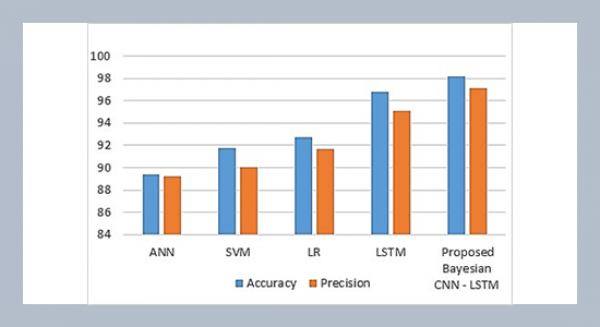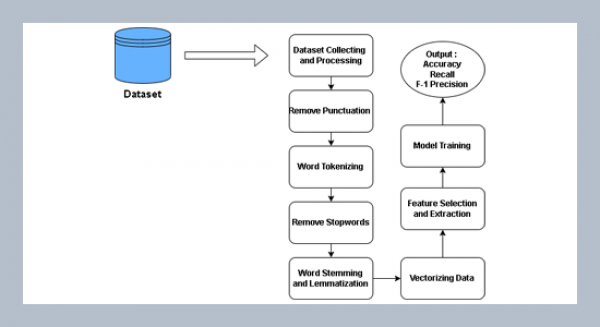REFERENCES
- Ababneh, J. 2019. Application of naïve bayes, decision tree, and k-nearest neighbors for automated text classification. Modern Applied Science, 13, 11.
- Amkor, A., El Barbri, N. 2022a. Detection of deltamethrin remains in mint with an electronic device coupled to chemometric methods. E3S Web of Conferences, 351, 01023.
- Amkor, A., El Barbri, N. 2022b. Electronic nose based on gas sensors and a machine-learning algorithm to discriminate potatoes according to the cultivated field nature. In 8th International Conference on Optimization and Applications (ICOA2022), 1–4.
- Amkor, A., El Barbri, N. 2023a. Artificial intelligence methods for classification and prediction of potatoes harvested from fertilized soil based on a sensor array response. Sensors and Actuators A: Physical, 349, 114106.
- Amkor, A., El Barbri, N. 2023b. Classification of potatoes according to their cultivated field by SVM and KNN approaches using an electronic nose. Bulletin of Electrical Engineering and Informatics, 12, 1471–1477.
- Amkor, A., Maaider, K., El Barbri, N. 2022c. An evaluation of machine learning algorithms coupled to an electronic olfactory system : A study of the mint case. International Journal of Electrical and Computer Engineering, 12, 4335–4344.
- Banerjee, M.B., Roy, R.B., Tudu, B., Bandyopadhyay, R., Bhattacharyya, N. 2019. Black tea classification employing feature fusion of E-Nose and E-Tongue responses. Journal of Food Engineering, 244, 55–63.
- Belmonte Valles, N., Retamal, M., Mezcua, M., Fernández-Alba, A.R. 2012. A sensitive and selective method for the determination of selected pesticides in fruit by gas chromatography/mass spectrometry with negative chemical ionization. Journal of Chromatography A, 1264, 110–116.
- Capelli, L., Sironi, S., Del Rosso, R. 2014. Electronic noses for environmental monitoring applications. Sensors, 14, 19979–20007.
- Cho, J.H., Kurup, P.U. 2011. Decision tree approach for classification and dimensionality reduction of electronic nose data. Sensors and Actuators, B: Chemical, 160, 542–548.
- Chrysargyris, A., Xylia, P., Botsaris, G., Tzortzakis, N. 2017. Antioxidant and antibacterial activities, mineral and essential oil composition of spearmint (Mentha Spicata L.) affected by the potassium levels. Industrial Crops and Products, 103, 202–212.
- El Boujnouni, M., 2022. A study and identification of COVID-19 viruses using N-grams with Naïve Bayes, K-nearest neighbors, artificial neural networks, decision tree and support vector machine. in International Conference on Intelligent Systems and Computer Vision (ISCV), 2022, 1–7.
- Estakhroueiyeh, H.R., Rashedi, E. 2015. Detecting moldy Bread using an E-nose and the KNN classifier. 5th International Conference on Computer and Knowledge Engineering, ICCKE 2015, 251–255.
- Gardner, J.W. 2004. Review of conventional electronic noses and their possible application to the detection of explosives. Electronic Noses & Sensors for the Detection of Explosives, 1–28.
- Gu, X., Sun, Y., Tu, K., Pan, L. 2017. Evaluation of lipid oxidation of Chinese-style sausage during processing and storage based on electronic nose. Meat Science, 133, 1–9.
- Jaabiri, I. 2013. Development and method validation for determination of Deltamethrin residue in olive oil using a reversed-phase high performance liquid chromatography. IOSR Journal of Applied Chemistry, 6, 1–8.
- Jurs, P.C., Bakken, G.A., McClelland, H.E. 2000. Computational methods for the analysis of chemical sensor array data from volatile analytes. Chemical Reviews, 100, 2649–2678.
- Lu, Q., Sun, Y., Ares, I., Anadón, A., Martínez, M., Martínez-Larrañaga, M.-R.,Yuan, Z., Wang, X., Martínez, M.-A. 2019. Deltamethrin toxicity: A review of oxidative stress and metabolism. Environmental Research, 170, 260–281.
- Mathur, A., Foody, G.M. 2008. Multiclass and binary SVM classification: Implications for training and classification users. IEEE Geoscience and Remote Sensing Letters, 5, 241–245.
- Morais, E.H. da C., Rodrigues, A.A.Z., Queiroz, M.E.L.R. de, Neves, A.A., Morais, P.H.D. 2014. Determination of thiamethoxam, triadimenol and deltamethrin in pineapple using SLE-LTP extraction and gas chromatography. Food Control, 42, 9–17.
- Nikolic, M.V., Milovanovic, V., Vasiljevic, Z.Z., Stamenkovic, Z. 2020. Semiconductor gas sensors: Materials, technology, design, and application. Sensors, 20, 1–31.
- Prak Chang, K.P., Zakaria, A., Abdul Nasir, A.S., Yusuf, N., Thriumani, R., Shakaff, A.Y.M., Adom, A.H. 2014. Analysis and feasibility study of plant disease using e-nose. In the 4th IEEE International Conference on Control System, Computing and Engineering, 58–63.
- Prodhan, M.D.H., Papadakis, E.N., Papadopoulou-Mourkidou, E. 2015. Determination of multiple pesticide residues in eggplant with liquid chromatography-mass spectrometry. Food Analytical Methods, 8, 229–235.
- Taneja, S.C., Chandra, S. 2012. Mint. Handbook of Herbs and Spices, 366–387.
- Tang, Y., Xu, K., Zhao, B., Zhang, M., Gong, C., Wan, H., Wang, Y., Yang, Z. 2021. A novel electronic nose for the detection and classification of pesticide residue on apples. RSC Advances, 11, 20874–20883.
- Trirongjitmoah, S., Juengmunkong, Z., Srikulnath, K., Somboon, P. 2015. Classification of garlic cultivars using an electronic nose. Computers and Electronics in Agriculture, 113, 148–153.
- Wijaya, D.R., Sarno, R., Daiva, A.F. 2017. Electronic nose for classifying beef and pork using Naïve Bayes. In 2017 International Seminar on Sensors, Instrumentation, Measurement and Metrology (ISSIMM) 104–108.















